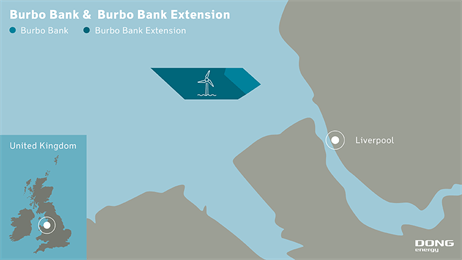Installation of the first monopile foundation, which was installed by the heavy-lift vessel, Svanen, a large floating crane standing 100 metres tall and able to lift more than 8,000 tonnes – has now been completed. The monopiles provide the base for the 8 megawatt (MW) wind turbines, which will be installed later this year.
Several work streams over the coming months
Claus Bøjle Møller, Burbo Bank Extension Programme Director at DONG Energy, said:
“The first foundation being installed really kicks off a busy and critical time for offshore construction and is a great achievement by our team and contractors.
“Over the coming months, several work streams will be coordinated in parallel as we continue to install foundations, get ready to receive and install the offshore substation, begin to lay the cables that connect the wind turbines to the national grid and then later in the autumn, begin the installation of the 8MW wind turbines themselves.
Construction is being monitored and coordinated from the DONG Energy office at Cammell Laird, which has over 40 people working at it currently. This number could increase to 150 people when workload is at its highest.
Belfast Harbour is also being utilised, as it has by previous DONG Energy projects in the Irish Sea, for transferring pre-assembled components to the offshore wind farm. This includes the blades for the 8 MW wind turbines, which will primarily be manufactured on the Isle of Wight and will be the first batch to be built in MHI Vestas’ new wind turbine blade manufacturing plant.
First time the 8MW turbine is commercially deployed
After foundation installation, the construction team will undertake cabling work and install the 32 8MW wind turbines, marking the first time this size of wind turbine will be commercially deployed.
The efficient new wind turbines are the latest step towards DONG Energy’s target of reducing the cost of energy. The wind farm will have a capacity of 258MW, generating enough electricity to power approximately 230,000 homes, and is expected to be fully commissioned by the end of 2017.
